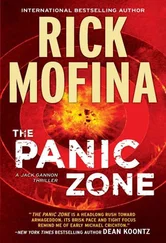“Why?”
“They accepted the account given by the Maes’ lawyer and because no party had come forward to challenge it.”
“What do you think of that, in light of what we know now?”
“The adoption story’s questionable, but when it came to the disappearance, the Maes struck me as honest people.”
“Why do you say that?”
“We polygraphed each of them twice, once with our examiner and once with a Calgary police examiner. The tests concluded that the Maes were being truthful about Tara Dawn’s disappearance. We were confident of their account of what happened at the truck stop. We had supporting witness statements, and we used credit card records and receipts to track down as many people as we could who were there at the time. Unfortunately, only one security camera was working properly so we did not get all the plates.”
“Did you have suspects?”
“There were two ex-cons on parole passing through, but we cleared them off the top. There was also a church group charter bus of children. We thought Tara may have somehow got taken onto that bus in error, but we tracked the bus and cleared it.”
“So no one, really?”
“No. It was very busy at the time. A lot of traffic but, no, nothing emerged. We believe she was abducted and our action and investigation was exhaustive. When it happened we moved fast and took no chances. We set up roadblocks to inspect vehicles and alerted the border crossings, but we didn’t have the resources to cover every point immediately.”
“But what about the adoption-you say it’s questionable?”
“Either it happened the way the Maes said it did, or it didn’t.”
“If it didn’t, how did the Maes come to have Tara Dawn? And how did she get to Rampart and leave a cryptic message fifteen years later?”
“Only one person knows the answers to those questions, Kate, and that’s Tara Dawn.”
Searle declined the waiter’s offer of more coffee, indicating their time together was nearing an end. Kate reviewed her notes.
“In my research I read a couple of articles that said you’d received more than one-hundred-and-fifty tips. Did anything come of them?”
“We followed all of them for leads. They yielded nothing.”
After letting a long moment pass, Kate unfolded a photocopy of a newspaper clipping from the Medicine Hat News .
“What about this? I dug this old news story up.”
Elliott looked at the old article, which said that on the day before Tara Dawn went missing, Medicine Hat City police received a report of a man trying to lure a girl into his van.
“Medicine Hat’s about a hundred kilometers, or sixty miles east of the truck stop, right?” Kate said.
“That’s right.” Elliott tapped the clipping. “This is one incident that continues to eat at me to this day.”
“Was there something to it?”
“We followed it up with Medicine Hat police. It seems kids nearby got a plate, but they weren’t sure if it was an Alberta plate, or Saskatchewan, North Dakota, BC or Montana.”
“So, if you got the plate number that’s only about sixty possibilities to run down?”
“Well, then the kids weren’t certain on the sequence. Then another kid said the stranger was only asking for directions, that it was not a lure or abduction attempt. Still, that one haunted me because the Medicine Hat van was generally similar to one that was seen at the truck stop at the time of the abduction. We pursued that lead but it led nowhere.”
“Would you give me the license number?”
“I’m off the case, that plate is not mine to give you, Kate.”
“I see.”
She closed her notebook and put it in her bag.
“I wish it were different,” Elliott said.
“It’s okay, I understand. You’ve been very helpful.”
Rampart, New York
Faces of the dead and missing.
Enlarged photographs of Carl Nelson, John Charles Pollard, Bethany Ann Wynn and Tara Dawn Mae stared from the corkboard at the men and women who’d gathered at Rampart police headquarters.
Investigators from the Riverview County Sheriff’s Office, the New York State Police and the FBI were now helping on the case.
In all, two dozen law enforcement people were seated around the board table studying the three-page summary Ed had prepared.
He tested his remote control for his laptop, which was connected to the large screen at the end of the room, and took a hit of coffee.
“Okay, let’s get started.” Brennan cleared his throat. “The purpose of this meeting is to bring you up to speed on what we know, what we’ve done, what we’re doing and what we need to do. Then we’ll take your feedback.”
While displaying images of the key players, the crime scene and evidence, Brennan said that the investigation adhered to the following scenario: that Carl Nelson, of Rampart, a man with no prior record, abducted and held Bethany Ann Wynn, of Hartford, Connecticut, captive in an abandoned barn for three years. After that time, he intended to kill her and stage his own suicide in a ruse that involved burning the barn after murdering former sergeant John Charles Pollard, whom he lured or abducted to the site from a Buffalo homeless shelter.
Given the severity of fire damage to Pollard’s body, autopsy results were inconclusive but showed a 9mm round was recovered from Pollard’s skull. Ballistics confirmed it was fired from a Glock 17, registered to Nelson and recovered at the scene. However, the autopsy also found a significant skull fracture from blunt trauma.
“We believe that Nelson killed Pollard then set fire to the barn intending to kill Bethany Ann Wynn, who was bound with rope in a confinement area. We believe the fire loosened her bindings, allowing her to escape at the final moment.”
Brennan explained that Nelson left a note in a Ford F-150 pickup truck, registered to him and found near the scene. “The note was printed on a laser printer, consistent with one recovered this morning at Nelson’s residence. Search warrants were executed earlier this morning for Nelson’s residence and place of employment as a senior systems technician at the MRKT DataFlow Call Center.
“Nelson had called in sick two days before the fire, prior to a weekend, which would have given him ample time to prepare.” Brennan clicked to a picture of Bethany Ann Wynn smiling. “Prior to her death from her injuries, Bethany Ann Wynn indicated that there were ‘others.’” Brennan clicked back to the barn’s charred ruins. “Troop B’s forensic unit continues processing the site as we speak, but has indicated evidence in the barn shows the crude construction of confinement rooms, the installation of a generator and a sophisticated use of a coil to steal small amounts of electricity undetected from power lines running nearby. This way Nelson kept a small part of the structure heated in winter.”
Brennan felt his phone vibrate in his pocket. Ignoring the call, he clicked on a photograph of Tara Dawn Mae and gave a summary of her fifteen-year-old case out of Brooks, Alberta, Canada.
“Among the evidence at the scene-this message carved into a wooden beam.” Brennan clicked on an enlargement of the carving. “And this item.” He clicked on the necklace. “A couple of things. One, the necklace has been submitted for analysis. We understand that there may have been a million of these charms sold some years ago. We’re working with the FBI and the manufacturer to determine more information on an identity of the owner. It was found at the scene, damaged in the fire. We may have a lead, but the engraving is illegible.”
Brennan continued.
“Two, we’re also working with the RCMP on this aspect of the investigation. If Nelson abducted Tara Dawn Mae, it means he may have held her captive for over fifteen years. Other case histories show that perpetrators have kept their victims for even longer periods, so we don’t know what we’re dealing with here, but what’s emerging is chilling.”
Читать дальше
Конец ознакомительного отрывка
Купить книгу












